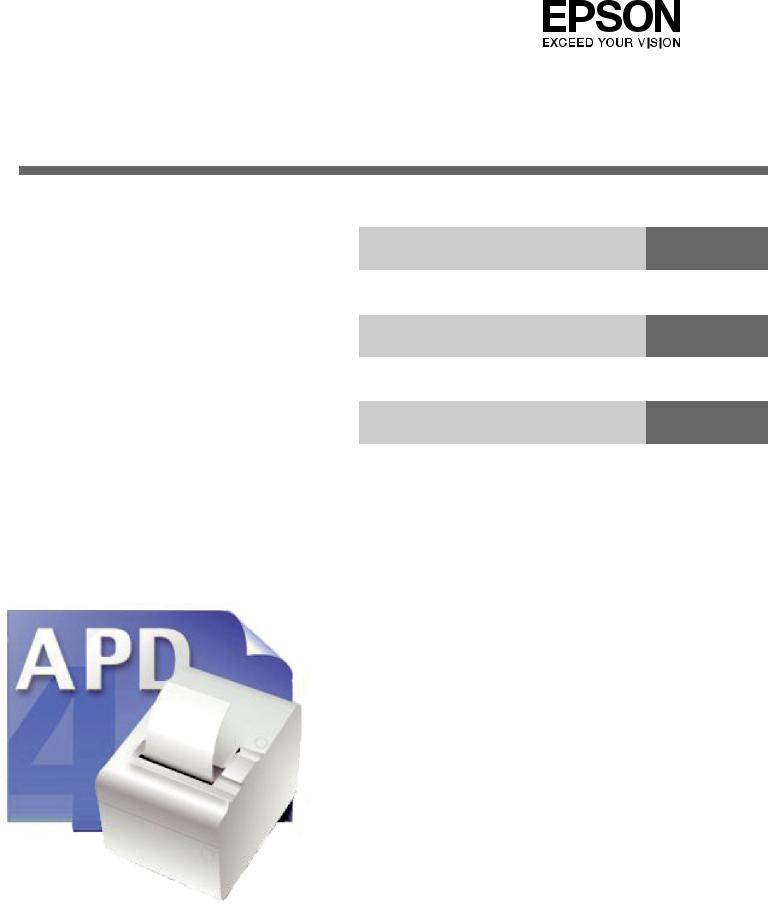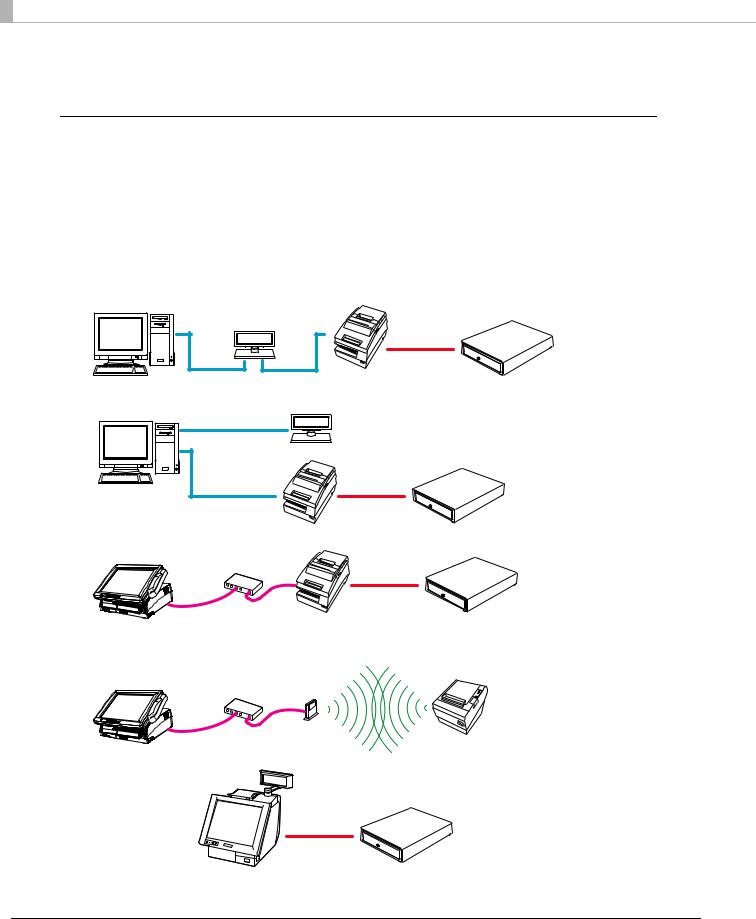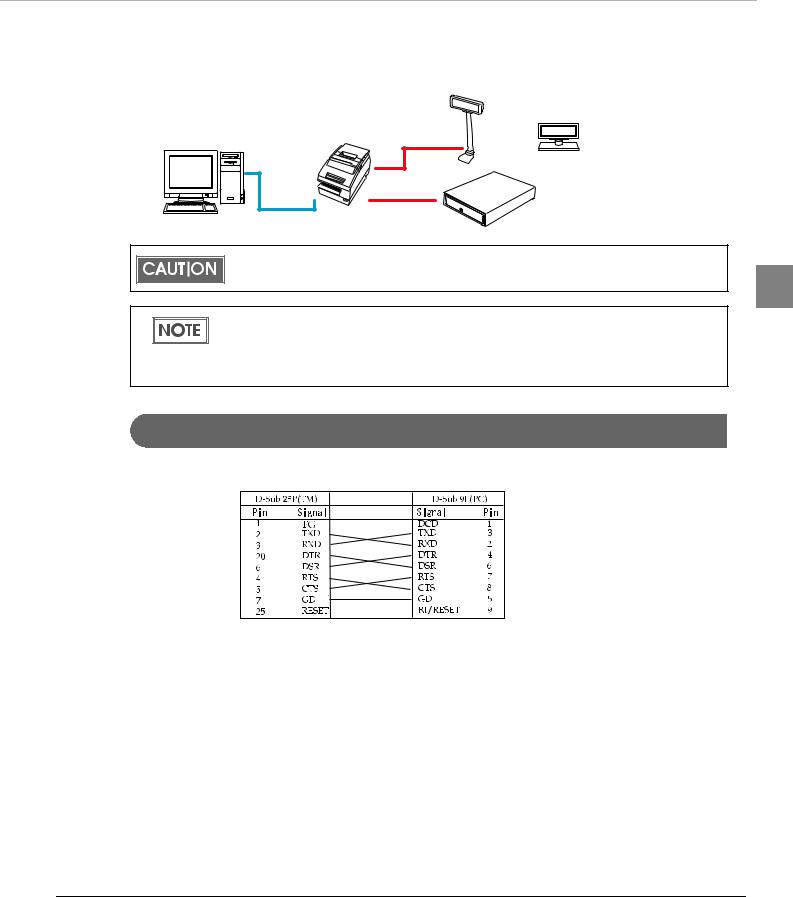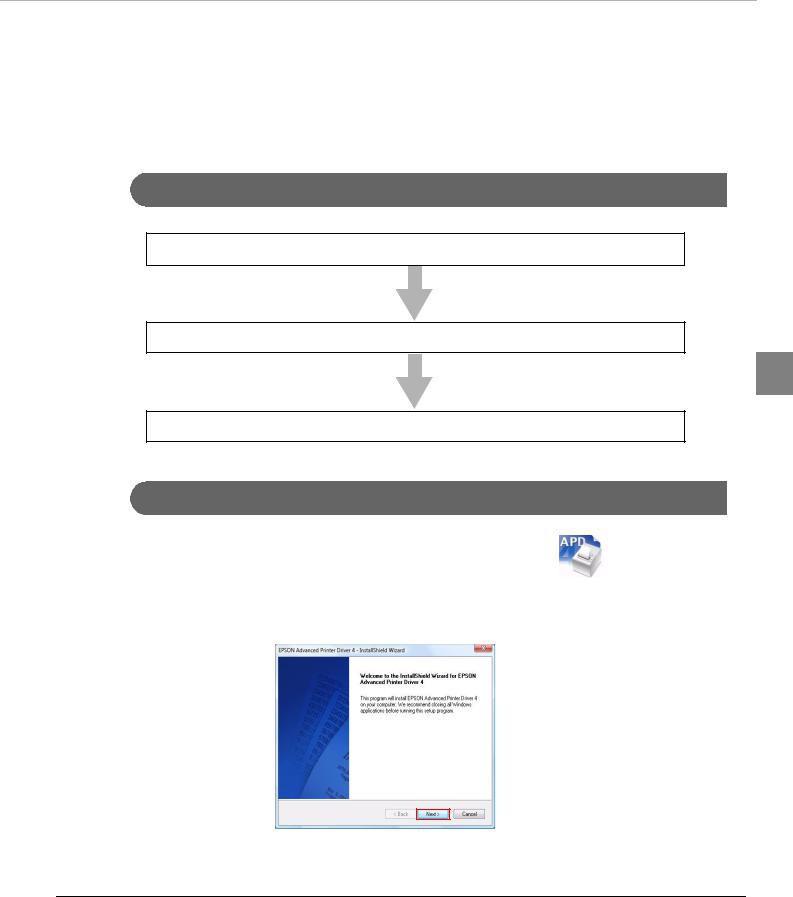Epson Advanced Printer Driver Ver.4 Install Manual

Advanced Printer Driver Ver.4
Install Manual
Overview
An overview of the APD and the description of operating environment.
Installation and Setup
Descriptions from installation of the APD to making prints with the TM printer.
Silent Installation
Descriptions of the silent install.
M00002111
Rev. M

Cautions
•No part of this document may be reproduced, stored in a retrieval system, or transmitted in any form or by any means, electronic, mechanical, photocopying, recording, or otherwise, without the prior written permission of Seiko Epson Corporation.
•The contents of this document are subject to change without notice. Please contact us for the latest information.
•While every precaution has taken in the preparation of this document, Seiko Epson Corporation assumes no responsibility for errors or omissions.
•Neither is any liability assumed for damages resulting from the use of the information contained herein.
•Neither Seiko Epson Corporation nor its affiliates shall be liable to the purchaser of this product or third parties for damages, losses, costs, or expenses incurred by the purchaser or third parties as a result of: accident, misuse, or abuse of this product or unauthorized modifications, repairs, or alterations to this product, or (excluding the U.S.) failure to strictly comply with Seiko Epson Corporation’s operating and maintenance instructions.
•Seiko Epson Corporation shall not be liable against any damages or problems arising from the use of any options or any consumable products other than those designated as Original EPSON Products or EPSON Approved Products by Seiko Epson Corporation.
Trademarks
EPSON and ESC/POS are registered trademarks of Seiko Epson Corporation in the U.S. and other countries.
MS-DOS , Microsoft , Win32 , Windows , Windows Vista , Windows 7TM, Windows Server , Visual Studio , Visual Basic , Visual C++ , and Visual C# are either registered trademarks or trademarks of Microsoft Corporation in the United States and other countries.
ESC/POS® Command System
EPSON has been taking industry’s initiatives with its own POS printer command system (ESC/POS). ESC/POS has a large number of commands including patented ones. Its high scalability enables users to build versatile POS systems. The system is compatible with all types of EPSON POS printers (excluding the TM-C100) and displays. Moreover, its flexibility makes it easy to upgrade the future. The functionality and the user-friendliness is valued around the world.
2

For Safety
Key to Symbols
The symbols in this manual are identified by their level of importance, as defined below. Read the following carefully before handling the product.
Provides information that must be observed to avoid damage to your equipment or a malfunction.
Provides important information and useful tips.
Restriction of Use
When this product is used for applications requiring high reliability/safety such as transportation devices related to aviation, rail, marine, automotive etc.; disaster prevention devices; various safety devices etc; or functional/precision devices etc, you should use this product only after giving consideration to including fail safes and redundancies into your design to maintain safety and total system reliability. Because this product was not intended for use in applications requiring extremely high reliability/safety such as aerospace equipment, main communication equipment, nuclear power control equipment, or medical equipment related to direct medical care etc, please make your own judgment on this product’s suitability after a full evaluation.
3

About this Manual
Aim of the Manual
This manual is aimed to provide the necessary information to install the EPSON TM printer driver and Customer display (Advanced Printer Driver).
Manual Content
The manual is made up of the following sections:
Chapter 1 |
Overview |
Chapter 2 |
Installation and Setup |
Chapter 3 |
Silent Installation |
4

Contents |
|
■ For Safety............................................................................................................................... |
3 |
Key to Symbols ....................................................................................................................................... |
3 |
■ Restriction of Use .................................................................................................................. |
3 |
■ About this Manual ................................................................................................................ |
4 |
Aim of the Manual................................................................................................................................. |
4 |
Manual Content .................................................................................................................................... |
4 |
■ Contents ................................................................................................................................ |
5 |
Overview ........................................................................................ |
7 |
■ Introduction........................................................................................................................... |
7 |
Package organization........................................................................................................................... |
7 |
Manual organization ............................................................................................................................. |
8 |
■ Operating Environment........................................................................................................ |
9 |
Computer ............................................................................................................................................... |
9 |
OS ............................................................................................................................................................ |
9 |
.NET Framework Version ...................................................................................................................... |
10 |
Interface ............................................................................................................................................... |
10 |
Application........................................................................................................................................... |
10 |
■ Supported Models .............................................................................................................. |
11 |
■ Connection Pattern ............................................................................................................ |
12 |
Connecting cable............................................................................................................................... |
13 |
■ Differences Depending on the OS .................................................................................... |
14 |
■ Restrictions .......................................................................................................................... |
15 |
■ Manuals/Sample Programs ............................................................................................... |
16 |
Installation............................................................................................................................................. |
16 |
Uninstallation ........................................................................................................................................ |
17 |
Installation and Setup.................................................................. |
19 |
Notes on upgrading from APD 2.xx, 3.xx........................................................................................... |
19 |
■ Installation methods ........................................................................................................... |
20 |
■ Standard Install ................................................................................................................... |
21 |
Installation Flow.................................................................................................................................... |
21 |
Installation............................................................................................................................................. |
21 |
Connecting the TM Printer.................................................................................................................. |
27 |
Print Test Page ...................................................................................................................................... |
29 |
5

■ Uninstallation ...................................................................................................................... |
30 |
■ When connecting Customer Display to TM printer ......................................................... |
32 |
Installation Flow .................................................................................................................................... |
32 |
Installation when using pass-through connection............................................................................ |
32 |
Installation when using Y-connection ................................................................................................ |
36 |
Connecting the devices ..................................................................................................................... |
40 |
Test print/display................................................................................................................................... |
41 |
■ Plug and Play...................................................................................................................... |
42 |
Installation Flow .................................................................................................................................... |
42 |
Connecting the TM Printer .................................................................................................................. |
43 |
Installing the printer driver ................................................................................................................... |
43 |
■ Custom Install ..................................................................................................................... |
44 |
Installation Flow .................................................................................................................................... |
44 |
Installation ............................................................................................................................................. |
44 |
■ Shared Printer ..................................................................................................................... |
49 |
Installation ............................................................................................................................................. |
49 |
Uninstallation......................................................................................................................................... |
52 |
■ Maintenance after Installing the APD .............................................................................. |
55 |
Adding the printer driver ..................................................................................................................... |
55 |
Uninstalling the printer driver............................................................................................................... |
58 |
Replacing a printer .............................................................................................................................. |
59 |
Changing the port settings of the printer driver ............................................................................... |
60 |
Upgrade Install of the APD.................................................................................................................. |
61 |
Silent Installation .......................................................................... |
63 |
■ What Is a Silent Installation?.............................................................................................. |
63 |
Flow of the Silent Installation ............................................................................................................... |
64 |
■ Setting the APD Environment To Be Copied..................................................................... |
64 |
APD Setting ........................................................................................................................................... |
65 |
■ Creating a Package or Script file ..................................................................................... |
66 |
■ Executing the Silent Installation ........................................................................................ |
69 |
How to execute the Silent Installation................................................................................................ |
69 |
Checking the Installation Result ......................................................................................................... |
70 |
Command Options .............................................................................................................................. |
70 |
6

Chapter 1 Overview 
Overview
Introduction
Advanced Printer Driver (hereafter called APD) is a Windows printer driver for EPSON TM printers and Customer Displays. You can display the Customer Display using the same operation as printing.
APD can monitor the status of the TM printer with Status API for use of POS embedded. However, the Customer Display is not supported.
The APD environment that is already set up can be restored (silent install) on another computer. |
1 |
The printers locally connected to the computers can be used as shared printers (Point & Print), by |
using network function of the OS.
Package organization
The APD consists of the following packages.
APD installer (APD_4xxE.exe)
A package to install the APD.
Manual/Sample installer (APDMANE_x.exe)
A package to install APD manuals (PDF) and sample programs using the APD.
7

Manual organization
Install Manual
This manual. Descriptions of the procedures from installing the APD to performing test print, adding printer drivers, and the silent install which is an automated APD installation.
TM Printer Manual
Descriptions of how to use the APD and its functions.
Printer Specification
Descriptions of the specifications of each printer driver.
TM-C100 Manual
Descriptions of how to use the TM C100 printer driver and its functions.
Customer Display Manual
Descriptions of how to use the Customer Display printer driver and its functions.
Status API Manual
Descriptions of how to get the status of the TM printer from the user application by using the Status API.
Devmode API / PRINTERINFO Manual
Descriptions of how to configure some printer functions on your application using the Devmode API. Descriptions of the PRINTERINFO Function of Windows.
8

Chapter 1 |
Overview |
|
|
|
|
|
|
|
|
Operating Environment |
|
|
|
|
Computer |
|
|
|
|
Any PC/AT compatible machine running any of the following Windows systems. |
|
|
|
|
OS |
|
|
|
|
• Microsoft Windows 7 (32bit/64bit) |
|
|
|
|
• Microsoft Windows Vista SP2 (32bit/64bit) English version |
|
|
|
|
|
|
1 |
||
• Microsoft Windows XP Professional SP3 (32bit) English version |
|
|||
• Microsoft Windows Server 2003 R2 SP2 (32bit/64bit) |
|
|
|
|
• Microsoft Windows Server 2008 SP2 (32bit/64bit) |
|
|
|
|
• Microsoft Windows Server 2008 R2 (64bit)
The following service/software is supported in Windows Server 2003/2008 environment. Terminal Service
Citrix XenApp5.0
•Microsoft Windows Embedded POSReady 2009
•Microsoft Windows Embedded for Point of Service 1.1 (32bit)
•Microsoft Windows Embedded Standard(32bit) English version The following components are required.
Volume Shadow Copy Service System Restore Core
OLE Dialog Interfaces
Local Printing Support |
|
Task Scheduler |
(Required for USB driver installation) |
Primitive: DbgHelp |
(Required for USB driver installation) |
Communications Port |
(If the Computer has no serial or parallel port, one of them |
|
must be installed manually.) |
Primitive: Winhlp32 |
Required for help file browsing) |
After installing the components listed above, perform a dependency check for the components using the utility of the Windows XP Embedded (Target Designer). For more details, ask your OS distributors.
OSs other than those listed above are not supported.
9

.NET Framework Version
For .NET environment, use in the following environment.
•.NET Framework 2.0 or later.
•For Windows Vista, .NET Framework 3.0 or later is installed.
Interface
The following interfaces are supported with the APD.
Interface |
Descriptions |
Parallel |
- |
|
|
Serial |
- |
|
|
USB |
USB 2.0 compliant |
|
(Full-Speed 12 Mbps operation. High-Speed operation is not possible.) |
|
|
Ethernet |
10/100 Base-T |
|
(To configure the settings of IP Address, see the UB-E02 Technical |
|
Reference Guide.) |
|
|
Wireless LAN |
IEEE 802.11b |
|
(To configure the settings of IP Address, see the UB-R02 Technical |
|
Reference Guide.) |
|
|
Interfaces only for the Customer Display or Drawer can be mounted on some TM printer models.
For information on the interfaces available on your TM printers, ask your sales representative.
Application
The APD supports direct printing from the Windows applications. No programming is required for printing directly from commercial applications, such as word processing or spread sheet. When you want to receive TM printer statuses such as paper out errors at your application, use the Status API. In this case, you need to develop the applications to incorporate the monitoring function.
10

Chapter 1 Overview 
Supported Models
APD 4.xx supports the following models.
DM-D10X/20X |
DM-D110/210 |
TM-H5200 |
TM-H6000II |
TM-J7600/7500 |
TM-L60II |
TM-P60 Peeler |
TM-T20 |
TM-T88IV |
TM-T88IV ReStick |
TM-U120II |
TM-U220 |
TM-U375 |
TM-U590 |
BA-T500II |
EU-T300 |
DM-D500 TM-H6000III TM-L90 TM-T58 TM-T88V TM-U230 TM-U675 EU-T400
TM-C100
TM-J2100 TM-L90 Peeler TM-T70 TM-T90 TM-U295 TM-U950 EU-T500
TM-H5000II TM-J7100 TM-P60 TM-T88III TM-U120 TM-U325 BA-T500
|
|
|
1 |
|
|
|
The printer driver for the TM-T88IV does not support the TM-T88IV ReStick. Also, the |
|
|
|
|
|
||
|
|
printer driver for the TM-T88IV ReStick does not support the TM-T88IV. |
|
|
|
|
|
|
|
|
|
|
|
|
11

Connection Pattern
When connecting the Customer Displays or the Cash Drawers to the TM printers.
The connection patterns shown below are available depending on the TM printer interface. For the pass through connection or Y connection, be sure to install the drivers in the correct order.
Pass-through connection
When using this connection method, first install the Customer Display driver.
Then, install the TM printer driver.
Modular
Serial |
Serial |
Stand-alone connection |
|
Serial |
|
Serial |
|
Parallel |
|
USB |
Modular |
Ethernet |
|
Ethernet connection |
|
Hub |
Modular |
|
|
Ethernet |
|
Wireless LAN connection |
|
Hub |
Access Point |
|
|
Ethernet
IR-700
Modular
Internal serial connection
12

Chapter 1 Overview 
Pass-through (Y) connection
When using this connection method, first install the TM printer driver.
Then, install the Customer Display driver.
Modular  OR
OR
USB |
Modular |
|
Serial |
||
|
If you use a connection with interface conversion connector or interface expanded board,
the operation is not guaranteed.
1
Select the appropriate connection patterns for each TM printer model (interface specification) and configure the communication settings of each interface.
Use DIP switch to configure communication settings of the TM printer and the Customer Display. For more details, see the manuals bundled with the products.
Connecting cable
For the Serial connection, use a cable configured as follows.
13

Differences Depending on the OS
The content of the descriptions of some operations in this book may be different depending on the OS. See the following.
Item |
Description |
|
Screens shown |
Screens in Windows Vista are used for the descriptions in this manual. |
|
|
|
|
|
Windows 7 |
|
|
[Start] - [Control Panel] - [Hardware and Sound] - [Devices and Printers] |
|
|
Right click the printer driver, and select the [Printer properties]. |
|
Confirmation and |
Windows Vista |
|
setting of the |
[Start] - [Control Panel] - [Hardware and Sound] - [Printers] |
|
printer driver |
Right click the printer driver, and select the [Properties]. |
|
|
Windows XP |
|
|
[Start] - [Control Panel] - [Printers and Faxes] |
|
|
Right click the printer driver, and select the [Properties]. |
|
|
|
|
|
Windows 7 |
|
|
[Start] - [Control Panel] - [Hardware and Sound] - [Devices and Printers] |
|
Delete a shared |
Windows Vista |
|
printer |
[Start] - [Control Panel] - [Hardware and Sound] - [Printers] |
|
|
Windows XP |
|
|
[Start] - [Control Panel] - [Printers and Faxes] |
|
|
|
|
|
Windows 7 |
|
|
[Start] - [Control Panel] - [Hardware and Sound] - [Add a printer] |
|
Add a shared |
Windows Vista |
|
printer |
[Start] - [Control Panel] - [Hardware and Sound] - [Add a printer] |
|
|
Windows XP |
|
|
[Start] - [Control Panel] - [Add a printer] |
|
|
|
|
|
Windows 7 |
|
|
When selecting a printer driver to delete in the [Devices and Printers] screen, |
|
|
the [Print server properties] message appears on the tool bar. |
|
Server Properties |
Windows Vista |
|
|
[Printers] - [File] - [Run as administrator] - [Server Properties] |
|
|
Windows XP |
|
|
[Printers and Faxes] - [File] - [Server Properties] |
|
|
|
|
|
Windows 7 |
|
|
[Start] - [Control Panel] - [Uninstall a program] |
|
Uninstall a program |
Windows Vista |
|
[Start] - [Control Panel] - [Uninstall a program] |
||
|
||
|
Windows XP |
|
|
[Start] - [Control Panel] - [Add or Remove Programs] |
|
|
|
14

Chapter 1 Overview 
Restrictions
•The APD cannot coexist with OPOS on a computer at the same time.
•When using the printer driver for EPSON Terminal Printers (laser printer, ink jet printer and others) or EPSON printer window together with the APD, installation and uninstallation must be performed in the following order:
[Installation]
1.EPSON Terminal Printer driver
2.APD
[Uninstallation]
1. |
APD |
1 |
|
||
2. |
EPSON Terminal Printer driver |
|
If you want to overwrite the EPSON Terminal Printer driver after the APD is installed, uninstall the APD first and then overwrite the EPSON Terminal Printer driver.
•For a USB connection, the printer driver can be installed by Plug and Play after installing the APD; however, the printer driver cannot be added when the TM printer is offline (cover open, paper out, and so on.) When the printer recovers from the offline status, it will be added.
•The maximum number of printers that can be connected simultaneously through a USB connection is 8.
•When a Parallel interface TM printer is connected to Windows XP, a Plug and Play request window pops up and ʺEPSON TM P2.01ʺ is added in Other devices of the Device manager. Do not perform [Uninstall] or [Update Driver Software] for this device. When a Parallel interface TM printer is connected to the computer prior to the driver installation, the computer detects ʺEPSON TM P2.01ʺ, but you should not uninstall or update, just click [Cancel]. (It is added to Other device in the Device manager, and deleted when the driver is installed.)
When you connect a TM printer with parallel interface before installing the driver, ʺEPSON P2.01ʺ is detected. In such case, just click ʺCancelʺ and not select ʺUninstallʺ or ʺUpdate Driver Softwareʺ. (It is added to ʺOther deviceʺ in the Device manager, however, automatically deleted after the driver is installed.)
15

Manuals/Sample Programs
Manuals and sample programs are provided in a package separate from the APD.
Installation
Follow the procedures below to install the manuals and sample programs.
Install manuals/sample programs after installing the APD.
1 |
Double click the [Manual/Sample Installer] icon to start the |
|
installation. |
2 |
The Install Shield Wizard screen appears. Click the [Next] button. |
3 |
The “License Agreement” screen appears. Read the content and select |
|
“I accept the terms of the license agreement.” Then click the [Next] |
|
button. |
4 |
The “Select Features” screen appears. Select “Manual” or “Sample”; |
|
then click the [Next] button.” |
5 |
The “Ready to install the Program” screen appears. Click the [Install] |
|
button. The installation of manuals or sample programs starts. |
6 |
The “Install Shield Wizard Complete” screen appears. Click the [Finish] |
|
button. Installation ends. |
7 |
Select from [Start]-[All Programs]-[EPSON]-[EPSON Advanced Printer |
|
Driver 4] and open [Manual]/[Sample Program]. The screen to select |
manuals and sample programs appears.
16

Chapter 1 Overview 
Uninstallation
Follow the procedures below to uninstall manuals and sample programs.
Uninstall manuals/sample programs before uninstalling the APD.
1 |
Select from [Start]-[Control Panel] and open [Uninstall a program]. |
|
|
|
(Reference page of other OS.) |
|
|
2 |
The “Program and Features“ screen appears. Click the [EPSON APD4 |
|
|
3 |
Sample&Manual] button. |
1 |
|
The uninstallation confirmation screen appears. Click the [Yes] button. |
|||
|
|||
|
Manuals and sample programs are uninstalled. |
|
|
4 |
Click the [Finish] button. Installation ends. |
|
17

18

Chapter 2 Installation and Setup 
Installation and Setup
This chapter describes the procedures from the installation to execution of test print.
The uninstallation procedure (page 30) and various maintenance procedures after installation (page 55) are also provided.
The APD of version 4.07 or later supports 32 bit and 64 bit version OS.
Install with Administrator privileges.
Do not connect the TM printer, until installation of the APD completes.Close all running applications before the installation.
Notes on upgrading from APD 2.xx, 3.xx
APD 2.xx or 3.xx needs to be uninstalled in order to install APD 4.xx. Keep in mind the following |
2 |
points. |
|
|
•When you install APD 4.xx to a computer on which APD 2.xx or 3.xx has been installed, the previous version is automatically uninstalled before the installation of APD 4.xx.
•Some printers do not support APD 4.xx. Make sure that your printer supports APD 4.xx. If you are using such printer and install APD 4.xx, the printer becomes unusable on your system.
19

Installation methods
The following methods are available to install the APD. |
|
• Standard Installation |
page 21 |
This is a standard method to install the APD.
Use this method also when you connect the Customer Display with the stand alone connection. For the APD of version 4.07 or later, the printer drivers for both 32 bit and 64 bit version OS are installed.
• Installation when connecting Customer Display to TM printer page 32 When you make pass through or Y connection (page 12) to use one port for your TM printer and Customer Display, their drivers should be installed in the specified order.
• Plug and Play page 42
TM printer with USB interface can be added as a printer device on a computer on which the APD is already installed (standard or custom install).
• Custom installation page 44 This allows you to select specific functions and port drivers to install the APD.
For the APD of version 4.07 or later, you can select the 32 bit printer driver or 64 bit printer driver according to your OS environment.
• Installation for sharing the printer |
page 49 |
This method installs a printer to be shared (Point & Print). |
|
• Upgrade installation of the APD |
page 61 |
This allows you to perform upgrade installation of the APD of new version. |
|
• Silent installation |
page 63 |
This allows you to copy the APD environment to other computers. |
|
20

Chapter 2 Installation and Setup 
Standard Install
This is a standard method to install the APD. Under normal conditions, use this method.
For the APD of version 4.07 or later, the printer drivers for both 32 bit and 64 bit version OS are installed.
Installation Flow
1.Installation (page 21)
2.Connecting the TM Printer (page 27)
2
3. Print Test Page (page 29)
Installation
Follow the procedure below.
1Double click the [APD] icon and start the installation.
2
21

|
|
|
3 |
The “License Agreement” screen appears. Read the content and select |
|
|
|
"I accept the terms of the license agreement". Then click the [Next] |
|
|
button. |
4 |
The “Setup Type” screen appears. Select "Standard", then click the |
|
|
|
[Next] button. |
5 |
The “Printer Configuration” screen appears. When installing the printer |
|
|
|
driver as well as the APD, click the [Add] button. When you want to install |
the printer driver later, click the [Next] button and proceed to Step 11.
For the USB interface, installing the printer driver at Step 5 is not necessary, the printer driver will be installed by Plug and Play function of the computer after APD driver is installed.
Click the [Copy] button to install more than one of the same printer driver. Up to 100 drivers can be copied. However, you can connect and use a maximum of 8 printers.
3 > |
|
|
|
|
4 > |
|
|
|
|
|
|
|
|
|
|
|
|
|
|
|
|
|
|
|
|
|
|
|
|
|
|
|
|
|
|
|
|
|
|
|
|
|
|
|
|
|
|
|
|
|
|
|
|
|
|
|
|
|
|
|
|
|
5 >
22
